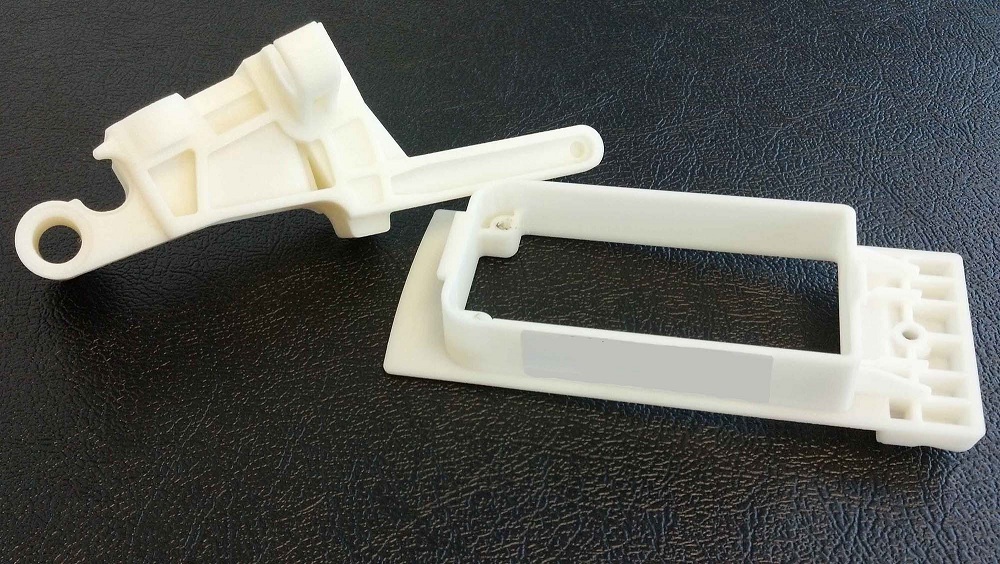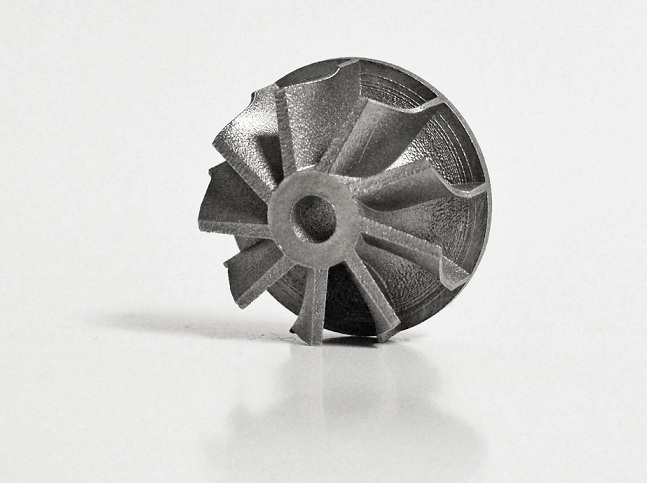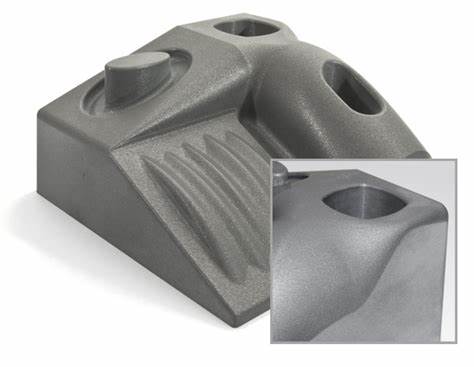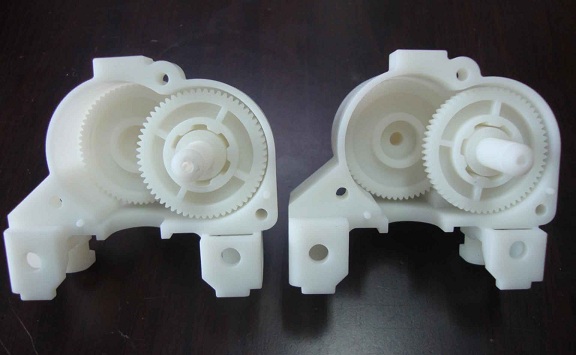What is Rapid Prototyping
Definition of rapid prototyping
Rapid prototyping (RP) technology is an advanced manufacturing technology developed in the 1990s. It is a key common technology for the development of new products for manufacturing companies. It has a positive driving effect for promoting product innovation, shortening the development cycle of new products and improving product competitiveness. Since the advent of the technology, it has been widely used in the manufacturing industry of developed countries, and a new technology field has emerged from it.

1. Introduction in detail to rapid prototyping services
RAPID PROTOTYPING (referred to as RP technology), or RAPID PROTOTYPING MANUFACTURING, referred to as RPM. In the automotive application industry called RP prototype.
RP technology is developed on the basis of modern CAD / CAM technology, laser technology, computer numerical control technology, precision servo drive technology and new material technology. Different types of rapid prototyping systems have different system characteristics and forming principles because of different forming materials. However, the basic principle is the same, that is, "layered manufacturing, layer by layer", similar to the mathematical integration process. Visually speaking, the rapid prototyping system is like a "3D printer", maybe many people called it 3d printer rapid prototyping.
2. How does Rapid prototyping works?
Rapid prototyping technology is a new technology that integrates advanced technologies such as computer-aided design (CAD), computer-aided manufacturing (CAM), computer digital control (CNC), precision servo drive, laser, and material science. The basic concept is: any Three-dimensional parts can be regarded as many two-dimensional plane contours of equal thickness superimposed along a certain coordinate direction. Therefore, according to the three-dimensional design model of the product formed on the computer, the three-dimensional model in the CAD system can be first cut into a series of plane geometry Information, that is, slicing it in layers to obtain the contours of the cross-section of each layer. According to these contours, the laser beam selectively cuts layers of paper (or solidifies layers of liquid resin and sinters layers of powder material) Or, the spray source selectively sprays a layer of adhesive or hot melt material, etc. to form each cross-sectional profile and gradually superimpose it into a three-dimensional product.
Rapid prototyping technology completely got rid of the traditional "removal" processing method (ie: partially remove the material on the blank that is larger than the workpiece to obtain the workpiece), and adopts a new "growth" processing method (ie: gradually layer by layer Superimposed into a large workpiece), and the complex three-dimensional processing is decomposed into a combination of simple two-dimensional processing. Therefore, it does not need to use traditional processing machine tools and molds, only 30% to 50% of the working hours and 20% to 35 % Cost, you can directly manufacture product samples or molds. Through rapid prototyping technology, you can automatically, directly, quickly, and accurately transform your design ideas into models with certain functions or directly manufacture products, so that you can quickly evaluate product design, modification and functional testing, greatly shortening the product development cycle. Using rapid prototyping technology for the company's new product development process can greatly shorten the development cycle of new products, ensure the time to market of new products, and improve the company's rapid response to the market ability at the same time, it can also reduce the risk of mold opening and new product development costs, find product design errors in a timely manner, and find errors early, changes early, thus avoiding the loss caused by changes subsequent step to improve the success rate of new products into production. Therefore, the application of rapid prototyping technology has become an important strategy for manufacturing new product development.
The RP system can produce a section with a certain small thickness and a specific shape every time according to the shape of the part, and then bond them layer by layer to obtain the three-dimensional parts that need to be manufactured. Of course, the entire process is automatically completed by the rapid prototyping system under the control of the computer. Different RP systems manufactured by different companies use different forming materials, and the working principle of the system is also different, but the basic principles are the same, that is, "layered manufacturing, layer by layer stacking." This process can be vividly called "growth method" or "addition".
Each cross-sectional data is equivalent to a CT photo in medicine, and the entire manufacturing process can be compared to an "integral" process.
3. What are the Different Types of Rapid Prototyping?
A. Stereo lithography Appearance (SLA)
That is, three-dimensional light curing molding method.
Focus on the surface of the photo-curable material with a laser of a specific wavelength and intensity to make it solidify sequentially from point to line and line to surface, complete the drawing operation of one layer, and then move the height of the layer in the vertical direction by one layer, and then cure At another level, such layers are layered to form a three-dimensional entity.
SLA is the earliest practical rapid prototyping technology, using liquid photosensitive resin raw materials, the process principle is shown in the figure. The process is: first design a three-dimensional solid model through CAD, use discrete programs to slice the model, design the scanning path, and the generated data will accurately control the movement of the laser scanner and the lifting table; the laser beam is scanned by the numerical control device The device is irradiated to the surface of the liquid photosensitive resin according to the designed scanning path to cure a layer of resin in a specific area of the surface. When the layer is processed, a cross section of the part is generated; then the lifting table descends a certain distance on the cured layer Cover with another layer of liquid resin, and then scan the second layer. The second cured layer is firmly bonded to the previous cured layer, so that the layers are layered to form a three-dimensional workpiece prototype. After removing the prototype from the resin, it is finally cured, and then the required product is obtained by polishing, electroplating, painting or coloring.
SLA technology is mainly used to manufacture a variety of molds, models, etc., you can also use other ingredients in the raw materials, using SLA prototype molds to replace wax molds in investment casting. SLA technology has a faster forming speed and higher accuracy, but due to shrinkage during resin curing, it will inevitably generate stress or cause deformation. Therefore, the development trend is to develop photosensitive materials with small shrinkage, fast curing and high strength.
SLA advantages
⒈ Light curing molding method is the earliest rapid prototyping manufacturing process, with high maturity and time-test.
⒉ The prototype is directly made from the CAD digital model, the processing speed is fast, the product production cycle is short, and there is no need for cutting tools and molds.
⒊It can process prototypes and molds with complex structural shapes or difficult to form using traditional means.
⒋ Visualize the CAD digital model and reduce the cost of error repair.
⒌ Provide samples for the experiment, you can verify and check the results of computer simulation calculations.
⒍ It can be operated online and controlled remotely, which is conducive to the automation of production.
Shortcomings of SLA
⒈ The cost of SLA system is high, and the cost of use and maintenance is too high.
⒉ The SLA system is a precision device that operates on liquids and has strict requirements on the working environment.
⒊ Most of the molded parts are resin, which has limited strength, rigidity and heat resistance, which is not conducive to long-term storage.
⒋ The pre-processing software and driver software have a large amount of calculation, and the correlation with the processing effect is too high.
⒌ The software system is complicated to operate and difficult to get started. The file format used is not familiar to the majority of designers.
⒍ Stereolithography technology is monopolized by a single company.
SLA development trends and prospects
The development trend of the three-dimensional light curing molding method is high speed, energy saving, environmental protection and miniaturization.
The ever-increasing processing accuracy makes it the first to have great potential in the fields of biology, medicine, microelectronics, etc.

B. SLS technology of metal powder sintering method
(1)Metal powder and binder mixed and sintered
First, the metal powder and a certain binder are mixed uniformly in a certain proportion, and the mixed powder is selectively scanned with a laser beam. The effect of the laser melts the binder in the mixed powder and binds the metal powder together to form metal. The body of the metal part is subjected to appropriate post-treatment, such as secondary sintering to further improve the strength and other mechanical properties of the metal part. This process is relatively mature and has been able to manufacture metal parts, which have been used in practice. Using metal powder as the base material (iron powder), adds an appropriate amount of sintering agent, sinters to form a prototype, and then performs subsequent processing, including burnout of the binder, high-temperature baking, metal infiltration (such as infiltration Copper) and other processes, and finally produce EDM electrodes. And the electrode is used to process a three-dimensional mold cavity on an EDM machine.
(2)Laser sintering of metal powder
Laser direct sintering of metal powder to manufacture parts is not very mature. More research is on the mixed sintering of two metal powders, one of which has a lower melting point and the other is higher. Laser sintering melts low-melting powder, and the molten metal bonds high-melting metal powder together. Due to the low strength of the sintered parts, it requires post-treatment to achieve higher strength.
(3)Metal powder compacting and sintering
Metal powder compacting and sintering is to pre-compact two kinds of metal powders with high and low melting points into sheet blanks, and laser sintering with appropriate process parameters. The low melting point metal is melted and flows into the pores of high melting point particles, making the high melting point The powder particles are rearranged to obtain a very dense sample. The compacted laser sintering has a completely different densification phenomenon than the conventional sintering. The structure after laser sintering varies with the cooling method. Air cooling results in fine pearlite. After quenching, martensite and granularity are obtained.
The principle of Selective Laser Sintering (SLS)
Selective laser sintering is the use of lasers to selectively sinter solid powders, and to sinter the solidified layers to form parts of the desired shape. The entire process includes the establishment of CAD models and data processing, powder spreading, sintering and post-processing.
The whole process device is composed of a powder cylinder and a forming cylinder. During working, the powder cylinder piston (powder feeding piston) rises. The powder spreading roller spreads the powder evenly on the forming cylinder piston (working piston). Control the two-dimensional scanning trajectory of the laser beam and selectively sinter the solid powder material to form a layer of the part. After the powder finishes one layer, the working piston drops by one layer thickness, and the powder spreading system is covered with new powder. The laser beam is controlled to scan and sinter the new layer. This cycle repeats, layer by layer, until the three-dimensional part is formed. Finally, the unsintered powder is recovered into the powder cylinder, and the molded part is taken out. For metal powder laser sintering, before sintering, the entire table is heated to a certain temperature, which can reduce thermal deformation during molding and facilitate layer-to-layer bonding.
Compared with other rapid prototyping (RP) methods, the most prominent advantage of SLS is that it uses a wide range of molding materials. In theory, any powder material that can form interatomic bonds after heating can be used as a molding material for SLS. The materials that can be successfully processed by SLS include paraffin, polymer, metal, ceramic powder and their composite powder materials. Due to the variety of SLS molding materials, material saving, wide distribution of molded parts performance, suitable for multiple uses, and the need for SLS to design and manufacture complex support systems, SLS is becoming more and more widely used.
Problems with SLS technology metal powder molding
SLS technology is a very young manufacturing field, and it is still not perfect in many aspects. For example, the manufactured three-dimensional parts generally have problems of low strength, low precision, and poor surface quality. Many parameters are involved in the SLS process (such as the physical and chemical properties of materials, laser parameters, and sintering process parameters, etc.), and these parameters affect the sintering process, forming accuracy and quality. During the molding process, due to the influence of various material factors and process factors, various metallurgical defects (such as cracks, deformation, pores, uneven structure, etc.) will be produced in the sintered parts.
(1) Influence of powder materials
The physical properties of powder materials, such as powder particle size, density, thermal expansion coefficient, and fluidity, have an important influence on the formation of defects in parts. Powder particle size and density not only affect the formation of defects in molded parts, but also have a significant impact on the accuracy and roughness of molded parts. The effect of powder expansion and solidification mechanisms on the sintering process can lead to increased porosity and reduced tensile strength of the molded part.
(2)Influence of process parameters
Laser and sintering process parameters, such as laser power, scanning speed and direction and spacing, sintering temperature, sintering time, and layer thickness, etc. will have an effect on the adhesion between layers, shrinkage deformation, warpage deformation and even cracking of the sintered body . Decreasing the scanning speed and scanning pitch or increasing the laser power can reduce the surface roughness, but the decreasing scanning pitch will cause the warpage tend to increase.
Therefore, in the optimization design, it is necessary to consider the optimization of each parameter as a whole to obtain the most effective parameter set for improving the quality of the molded part. The manufactured parts generally have some problems such as low density, strength and precision, and mechanical and thermal properties that cannot meet the requirements for use. These molded parts cannot be used directly as functional parts and require post-processing (such as hot isostatic pressing HIP, liquid phase sintering LPS, high temperature sintering and immersion) before they can be put into practical use. In addition, it should also be noted that due to the high SLS temperature of the metal powder, in order to prevent the oxidation of the metal powder, the metal powder must be enclosed in a container filled with protective gas during sintering.

C. Laminated Object Manufacturing (LOM) or Sheet Lamination
Layered entity manufacturing (LOM-Laminated Object Manufacturing) method, also known as lamination method, it uses sheet material (such as paper, plastic film or composite material) as the raw material, and its forming principle is shown in the figure. According to the cross-sectional contour data extracted by the computer, the paper coated with hot-melt adhesive on the back is laser cut out the inner and outer contours of the workpiece. After cutting one layer, the feeding mechanism superimposes a new layer of paper, and uses the thermal bonding and pressing device to bond the cut layers together, and then cuts, so that the layers are cut and bonded layer by layer, and finally become a three-dimensional workpiece . Common materials for LOM are paper, metal foil, plastic film, ceramic film, etc. In addition to manufacturing molds and models, this method can also directly manufacture structural or functional parts. This method is characterized by cheap raw materials and low cost.
Forming material: fiber paper coated with thermal adhesive
Workpiece performance: equivalent to high-grade wood
Main use: rapid manufacture of new product samples, models or casting wood mold

D. FDM (Fused Deposition Modeling)
This method uses wire-like materials (paraffin, metal, plastic, low melting alloy wire) as raw materials, and uses electric heating to heat the wire to a temperature slightly higher than the melting temperature (about 1 ° C higher than the melting point). Under the control of the computer, The nozzle moves in the xy plane, and the molten material is coated on the worktable. After cooling, a layer of the workpiece is formed. After a layer is formed, the nozzle is moved up one layer to carry out the next layer of coating, which is formed layer by layer. Three-dimensional workpiece. The method has little pollution, and the material can be recycled, which is used for forming small and medium-sized workpieces. The following figure is the schematic diagram of FDM forming.
Forming material: solid filament engineering plastic
Workpiece performance: equivalent to engineering plastic or wax mold
Main use: plastic parts, wax molds for casting, samples or models.
(1). Advantages
a. The operating environment is clean and safe and can be performed in the office
b. The process is clean, simple, easy to operate and does not generate garbage
c. The dimensional accuracy is high, the surface quality is good, and it is easy to assemble Quickly build bottle-shaped or hollow parts
d. The raw materials are provided in the form of reel wire, which is easy to handle and the amount of money is quickly replaced
e. The raw materials are cheap
f. The material utilization rate is high; , Such as dyed ABS, PLA and medical ABD, PC, PPSF, synthetic rubber, casting wax.
(2). Disadvantages
a. low precision, difficult to build parts with complex structure
b. low strength perpendicular to the cross-section
c. relatively slow forming speed, not suitable for building large parts.
4. Application example of rapid prototyping
In practical applications, many products must be processed through molds. It is a time-saving and cost-saving method to make product samples first and then remake the mold with a molding machine.
For example, the new rocket liquid oxygen engine pump casing is difficult to process with traditional machining methods and must be formed by a mold. It is estimated that the mold opening time is 8 months and the cost is at least 300,000. If the product design is wrong, the entire mold will be scrapped. You can use rapid prototyping to make plastic samples for this product, which can be used as a master mold for turning silicone molds. The master mold is fixed in an aluminum standard frame, poured into the prepared silicone rubber, and allowed to stand for 12 to 20 hours. After the silicone rubber is completely cured, open the mold frame, take out the silicone rubber and cut it along the predetermined parting line with a knife, and take out the mother mold. The silicone mold used for casting the wax of the pump casing is successfully rebuilt. Through this molding, a wax model is formed, after shell coating, roasting, wax loss, pressure casting, sand blasting, a qualified pump casing casting is manufactured in just two months, after necessary machining It can be installed and run, which shortens the entire trial production cycle by 2/3 compared with the traditional method and saves 3/4 in cost.
5. Technical characteristics of rapid prototyping
a. Fast manufacturing
RP technology is an effective method for complex prototype or part manufacturing in parallel engineering, which can synchronize product design and mold production, thereby improving enterprise R & D efficiency, shortening product design cycle, and greatly reducing the cost and risk of new product development. The small size, especially shaped products are particularly suitable.
b. Integration of CAD / CAM technology
The integration of design and manufacturing has always been a difficulty. At this stage, computer-aided process (CAPP) cannot be seamlessly connected with CAD and CAM. This is also one of the difficulties that has restricted the informationization of the manufacturing industry. The technology integration of CAD, CAM, laser technology, numerical control technology, chemical engineering, material engineering and other technologies makes the concept of design and manufacturing integration perfect.
c. Fully reproduce 3D data
The parts produced by rapid prototyping can completely reproduce the three-dimensional shape, regardless of the special-shaped surface of the outer surface or the special-shaped hole of the inner cavity, the shape can be completed truly and accurately.
d. Various molding materials
There are many types of materials used in various types of RP equipment. Resin, nylon, plastic, paraffin, paper, and metal or ceramic powders basically meet the mechanical performance requirements of most products.
e. Create significant economic benefits
Compared with traditional machining methods, the development cost is saved by more than 10 times. Similarly, rapid prototyping technology shortens the product development cycle of the enterprise, which greatly reduces the problems of repeatedly modifying the design plan during the development of new products, and basically eliminates it. The problem of modifying the mold, the economic benefits created are obvious.
f. Wide application fields
After years of development, RP technology has basically formed a system. Similarly, the applicable industry has gradually expanded, from product design to mold design and manufacturing, material engineering, medical research, culture and art, construction engineering, etc. The use of RP technology gradually has made RP technology have broad prospects.
6. Market Expectation of rapid prototyping
Development momentum
In modern industrial production, 60% to 90% of industrial products need to be processed with molds. The mold industry has become a basic industry in the manufacturing industry, a means of transforming technological achievements, and an important area of high-tech industries. Developed countries such as Europe and the United States have become the "magnetic industry" of "spotting iron into gold". It can be seen that the mold industry has an important and prominent position in the economic development of countries around the world.
Development trend
1. Production, operation and market globalization;
2. Personalized and diversified user needs;
3. The product life cycle is short, and the replacement is accelerated;
4. High-tech product technology;
5. Fierce market competition.


